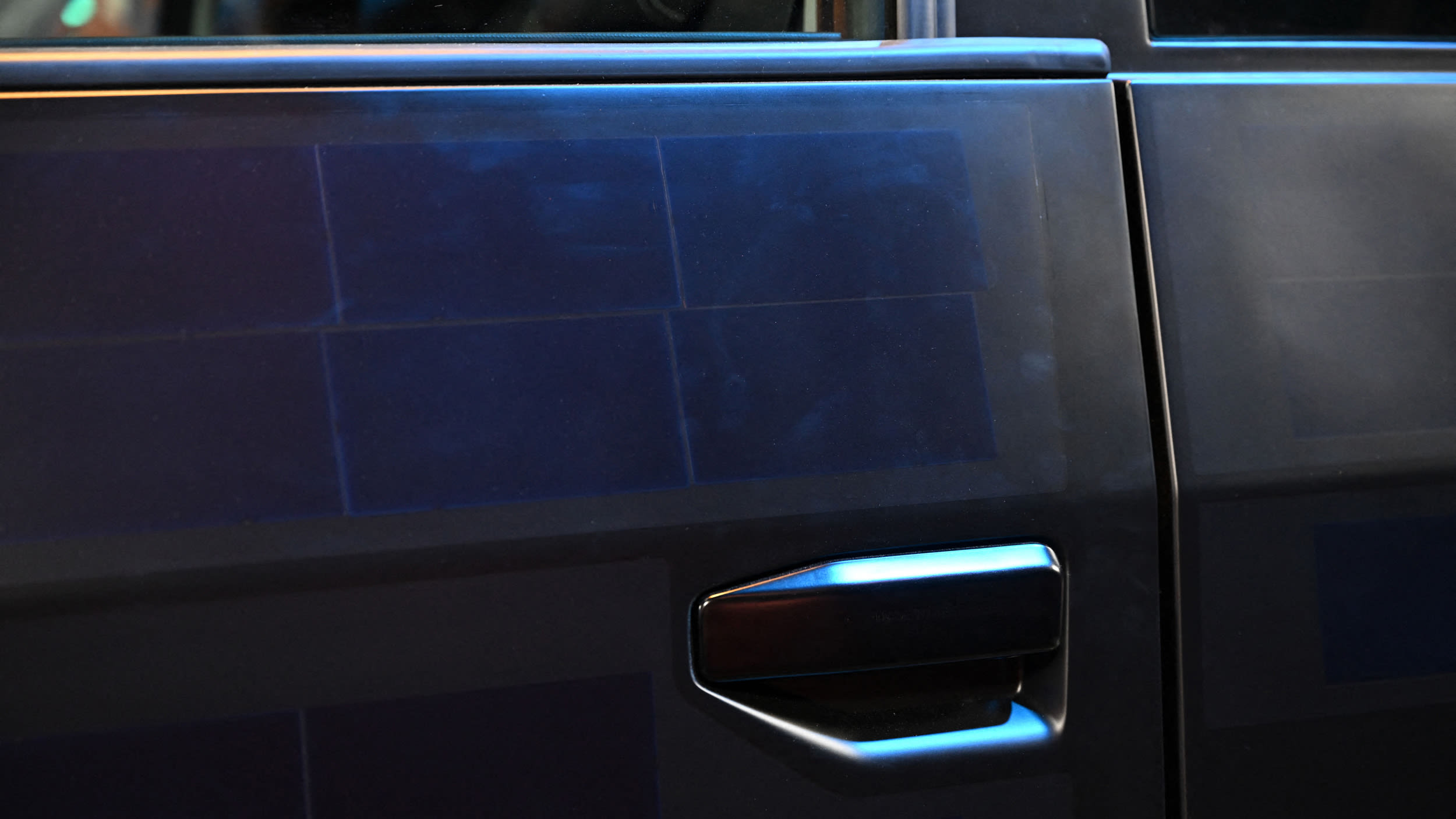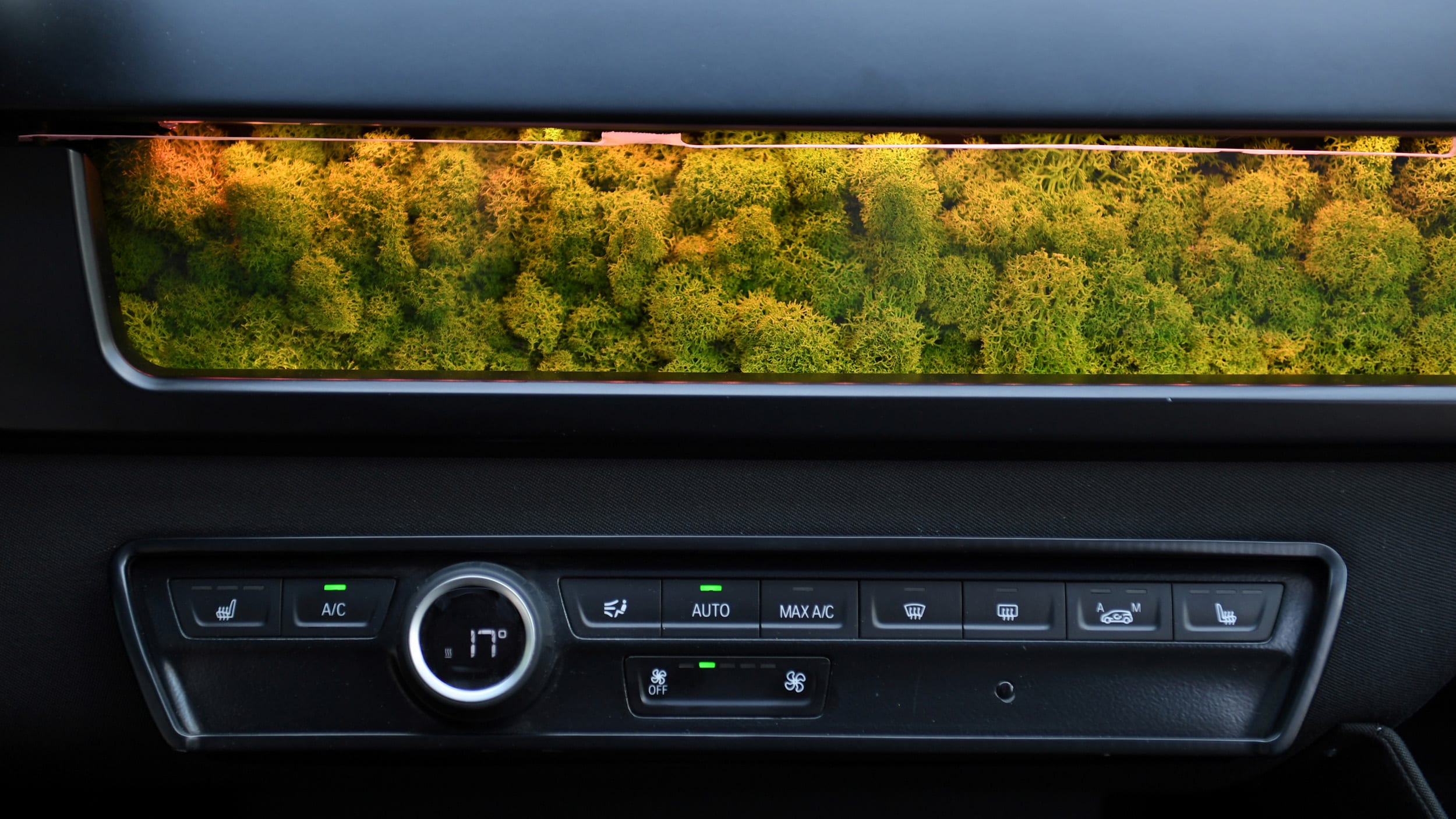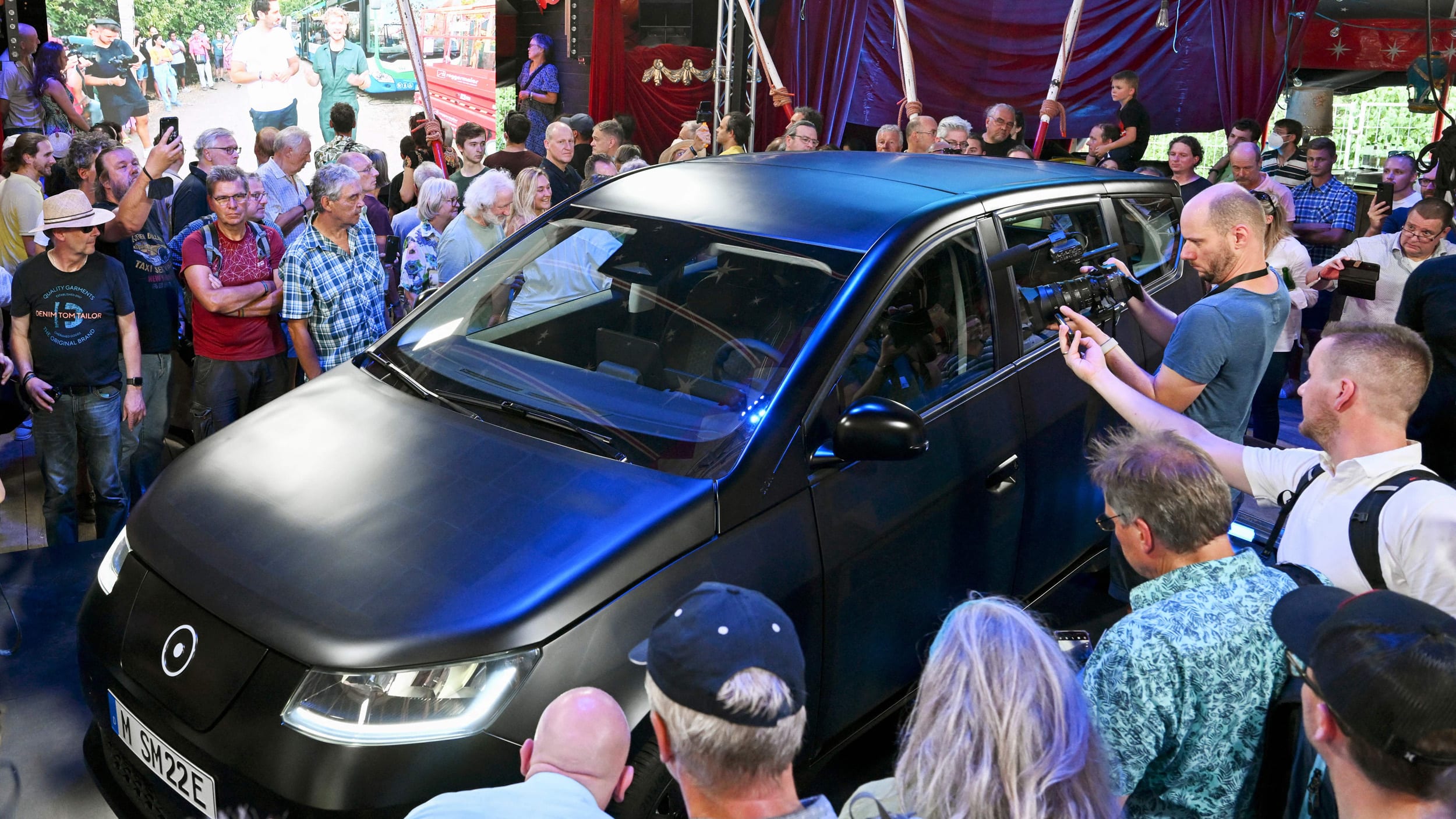Sono Motors solar-powered EV hatchback first ride: Here comes the Sion

Like flying cars or full autonomy, solar-powered electric vehicles are cool to read (and write) about but never seem quite ready for the mainstream and masses. Aptera has been teasing its sun-powered, three-wheel EV for more than a decade, and after rising phoenix-like from bankruptcy, it recently announced it will start production next year. Yeah, OK, sure.
Lightyear and Sono Motors also plan to start production on their more conventional solar-powered cars within the next year and have collected tens of thousands of preorders. While the Lightyear 0 sedan and Sono Sion hatchback both have solar panels embedded in their bodies to soak up sunlight and turn it into electricity to charge the cars’ batteries, they dramatically differ in price. The Lightyear 0 starts at about $265,000 (before taxes), while the Sono Sion starts at about $25,000 excluding tax, title, and fees – less than one-tenth of the Lightyear 0’s price.
While Munich-based Sono doesn’t have immediate plans to bring the Sion stateside, the company recently conducted a tour of the U.S. to drum up interest and ink on the car and ring the NASDAQ opening bell to celebrate its November 2021 IPO. Whoopi Goldberg and I rode in the Sion – not together – and I spoke with Sono COO Thomas Hausch about the company’s plans and why the brand and car’s names are so similar to both an audio company and a defunct auto brand.

Bumpy, Bondo-like look
While I haven’t encountered the Lightyear 0 in person, it’s clear from seeing and riding in the Sion why it costs much less. It’s a boxy budget five-door hatch with 456 half-cut solar cells integrated into the exterior, giving it a bumpy, Bondo-like look that may not bother the green-car crowd but will likely trigger disdain among automotive-design aesthetes.
The solar cells generate from 70 miles (in typical weather) to 152 miles per week (in optimal, always sunny) environs, adding to the Sion’s range of 190 miles – enough for “full self-sufficiency on short distances,” said Sono. Otherwise, the Sion’s liquid-cooled 54-kWh battery pack can be energized from 0% to 80% in about 35 minutes at a DC fast-charging station. With a Level 2 charger at 240 volts, it takes four hours to reach the same capacity.
Sion sells an 11-kWh wall box home charger with bi-directional capability, allowing the car’s battery to serve as power storage to run a home for up to five days, according to Sono. The car can also be used for portable juice while tailgating, camping or on a construction site or even charge other EVs at up to 11 kW.

Inside the Sion looks and feels like an entry-level electric vehicle but is surprisingly roomy. It has all the interior bits you’d expect, such as a 10-inch dashboard screen. And something you wouldn’t: a thin, dashboard compartment with a transparent cover filled with green moss. The in-dash vegetation is designed to purify interior air and can be replaced with a conventional air filter. But Sono head of PR and communications Christian Scheckenbach, added that it’s really just a “design element.”
The Sion is also quick, at least with Scheckenbach behind the wheel whipping it around a Silicon Valley parking lot during a demo drive – cutting off a pesky Prius that got in the way. Scheckenbach pointed out the dashboard screen displaying in real time how the solar panels charged the battery under the bright California sun.

Next logical steps: U.S. and China
The Sion will be available in Europe the second half of 2023 and can be purchased directly from Sono. “Our business model does not include dealerships, but it does include a service network,” Hausch said. Sono recently announced an agreement with the Europe-wide Bosch Car Service network for repair, servicing, maintenance and warranty work on the Sion.
The company has 20,000-plus reservations that require a minimum €500 deposit (just over $500) and the average deposit is about €2,000 (or $2,000). The company also has more than 22,000 B2B preorders from fleet operators, including for 12,600 Sions from Finn, a German car-subscription service with operations in the U.S.
The Sion will launch as a lefthand-drive model in 10 European markets, excluding countries with righthand drive. “It might take two years to come to the next country,” Hausch said of expansion beyond Europe.
He added Sono considers “the U.S. and China as the next logical steps,” and the second vehicle in its lineup will be a crossover. “We have a C-segment crossover we built on the same platform and is also a last-mile delivery vehicle,” Hausch said. Sono plans to produce 43,000 vehicles a year using Valmet Automotive, the same Finnish contract auto manufacturer building the Lightyear 0.
Asked about the company and car’s potentially confusing names, Hausch said cofounder and CEO Laurin Hahn’s father was a radiologist and specialized in ultrasounds, with “sono” coming from sonography.
“Sion” came from graffiti on a wall in Munich Hahn often walked past. “That was before they founded the company,” Hausch said. “That there’s a Scion in the U.S. was not known to the founders until years later.”
Hopefully the Sono Sion has a brighter future than Toyota’s Scion. And its solar-powered vehicle proves more practical, real and ready than flying and fully autonomous cars.



